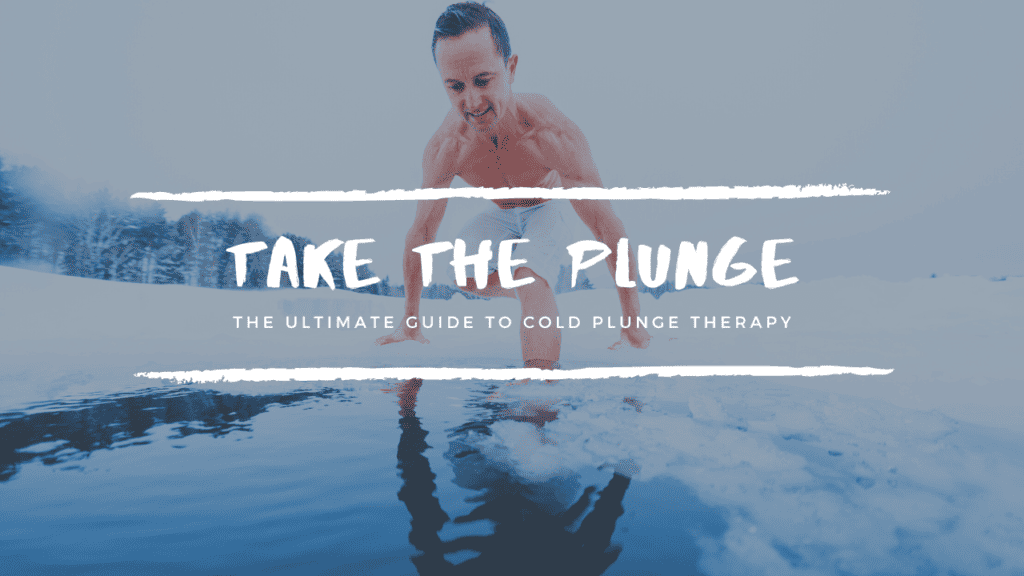Our website is supported by our readers. We sometimes earn a commission when you click through the affiliate links on our website at no extra cost to you.
Introduction to Cold Plunge Therapy
What is Cold Plunge Therapy?
Unless you’ve been hiding under a rock, surely you’ve heard of Cold Plunge Therapy. It’s only one of the fastest-growing trends in the health and wellness space.
Also known as cold water immersion therapy, it is a practice that involves submerging your body in extremely cold water for a short period of time. And no, this isn’t the Ice Bucket Challenge 2.0, thankfully.
While it may sound daunting and uncomfortable, this therapeutic technique has been embraced by many wellness enthusiasts around the world for its numerous physical and mental benefits.
The concept behind cold plunge therapy lies in subjecting your body to an intense shock of cold temperature, which triggers a series of physiological responses that can lead to improved well-being.
Historical Background and Origins

Cold water immersion may seem new and on-trend, but it’s actually been practiced for quite some time. The roots of cold plunge therapy can be traced back thousands of years to various ancient civilizations.
For example, the Greeks were known to indulge in icy baths after their vigorous athletic activities as a way to aid muscle recovery and reduce inflammation.
Similarly, traditional Scandinavian societies adopted the practice of plunging into freezing lakes or rolling around in the snow after sauna sessions for rejuvenation purposes.
These ancient practices have stood the test of time and have now evolved into modern-day variations like ice baths, cryotherapy chambers, and purpose-built DIY cold plunges.

Benefits of Cold Plunge Therapy
The benefits offered by cold plunge therapy are manifold and extend beyond just physical wellness. One immediate advantage is its ability to reduce muscle soreness and inflammation caused by intense exercise or injuries.
When your body is exposed to extremely cold temperatures, blood vessels constrict rapidly before dilating upon rewarming. This cycle promotes efficient blood circulation that carries oxygen-rich blood throughout your system, helping relieve pain and accelerate healing processes.
Moreover, regular sessions of cold plunge therapy can boost your immune system by increasing levels of white blood cells that combat infections and strengthen overall immunity. The exposure to extreme temperatures can also stimulate the release of endorphins – those “feel-good” hormones that enhance your mood, reduce stress, and combat anxiety or depression.
Additionally, cold plunge therapy has been associated with improved sleep quality, increased alertness, and heightened mental clarity. So now that we have established what cold plunge therapy is, explored its historical background, and highlighted its numerous benefits, let’s delve further into the science behind this invigorating practice and understand how it interacts with our bodies in section 2 of this comprehensive guide.
The Science Behind Cold Plunge Therapy
How Cold Exposure Affects the Body
When we subject our bodies to cold temperatures during a plunge therapy session, it triggers a series of remarkable physiological responses. One of the key reactions is the activation of the sympathetic nervous system. This is our body’s “fight or flight” response, which kicks in to prepare us for perceived danger.
The cold stimulus acts as a stressor, prompting an immediate surge in adrenaline and norepinephrine levels. These hormones increase alertness, sharpen focus, and awaken our senses.
Release of Endorphins and Neurotransmitters

Cold plunge therapy isn’t just about a jolting shock to the system; it also has some surprising feel-good benefits. As our body adapts to the intense cold, it responds by releasing endorphins—those wonderful natural painkillers that make us feel euphoric and happy.
Moreover, neurotransmitters like dopamine and serotonin are also released during cold exposure. These chemicals play crucial roles in regulating mood, promoting feelings of well-being and relaxation.
Improved Circulation and Oxygenation
The invigorating effects of cold plunge therapy extend beyond mere sensory stimulation. When we immerse ourselves in cold water or expose ourselves to chilly air, blood vessels constrict as part of our body’s natural defense mechanism against heat loss.
This vasoconstriction pushes blood from peripheral areas towards vital organs at the core, improving circulation overall. Once we emerge from the cold environment into warmth again, blood vessels dilate rapidly—a process known as vasodilation—which flushes oxygenated blood back into tissues throughout the body.
Impact on the Immune System and Inflammation Reduction
Cold plunge therapy has been shown to have profound effects on our immune system’s functionality. Exposure to cold temperatures stimulates the production of white blood cells, specifically immune cells called lymphocytes and monocytes.
These cells play crucial roles in fighting off pathogens and bolstering our body’s defense against diseases. Additionally, cold therapy contributes to a decrease in pro-inflammatory cytokines, which are markers of inflammation.

By reducing inflammation, cold plunge therapy can potentially alleviate symptoms of chronic pain and improve recovery from intense physical activities or injuries. The science behind cold plunge therapy is fascinating and multifaceted.
When we subject our bodies to the shock of cold exposure, it activates the sympathetic nervous system while also triggering the release of endorphins and neurotransmitters that enhance our mood and mental well-being. This therapy also improves circulation throughout the body by alternating between vasoconstriction and vasodilation.
Furthermore, it positively influences our immune system’s functionality by boosting white blood cell production while reducing inflammation. The combination of these physiological responses makes cold plunge therapy a truly holistic experience with numerous health benefits.
Preparing for a Cold Plunge Session
Choosing the right location or facility
When embarking on your cold plunge therapy journey, one of the first decisions to make is where you will take the plunge. There are two main options: natural bodies of water or at-home cold plunges. Natural bodies of water, such as lakes and rivers, provide a unique connection to nature and offer an authentic experience.
However, they come with their own set of considerations like water quality, temperature fluctuations, and potential hazards. On the other hand, at-home cold plunge pools are specifically designed for this therapy.
They offer more control over the temperature and provide a safe environment for your sessions. These pools often come equipped with additional features such as heating systems and filtration to ensure optimal conditions for your plunges.

Safety considerations and precautions
Prioritizing safety during your cold plunge sessions is paramount to ensure an enjoyable experience without any mishaps. Firstly, it’s important to consult with a healthcare professional before engaging in this therapy, especially if you have any underlying health conditions or concerns.
Next, be mindful of the duration and frequency of your plunges. Too much exposure to extreme cold can lead to hypothermia or other adverse effects on the body.
Start with shorter durations and gradually increase as you acclimate over time. In addition, always have someone nearby when taking a cold plunge—whether it’s a friend accompanying you or ensuring there is staff available at facilities equipped with lifeguards.
Equipment needed for a successful session
Dressing appropriately for your cold plunge session can significantly enhance your overall experience. The choice between swimwear or wetsuit depends on personal preference and intended duration in the water. If you opt for swimwear, consider selecting a well-fitting, comfortable swimsuit that allows freedom of movement.
Related: The 5 Best Water Chillers for Cold Plunge
Many prefer wearing quick-drying fabric to prevent discomfort after leaving the water. On the other hand, a wetsuit offers insulation and keeps your body warmer during longer sessions.
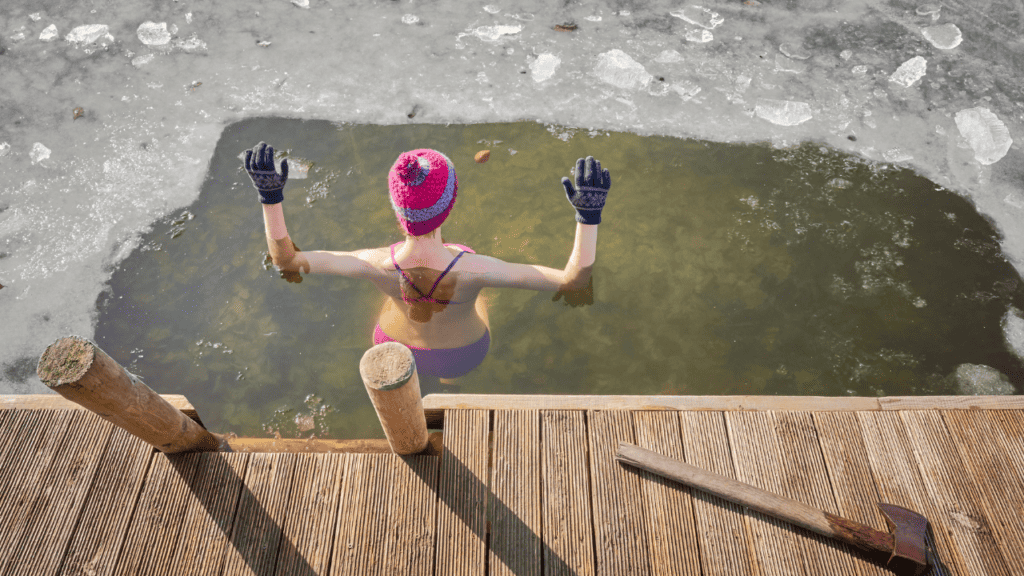
Don’t forget to bring along towels or robes to dry off and warm up after your plunge. These items are essential for maintaining body heat post-session.
Moreover, consider bringing accessories like flip-flops or water shoes to protect your feet and prevent slipping on wet surfaces. With these preparations in mind, you’ll be all set for an invigorating cold plunge therapy session.
Remember, choose the location or facility that suits your preferences and safety requirements. Take necessary precautions to ensure a safe experience, and don’t forget to equip yourself with the right attire and accessories for maximum comfort throughout the process.
Related: The Ice Barrel 300 Review
Disclaimer: Cold plunge therapy has potential risks associated with it. Consult with a healthcare professional before attempting this therapy, particularly if you have any underlying health conditions or concerns.
Techniques for an Effective Cold Plunge Session
Gradual acclimatization to cold temperatures
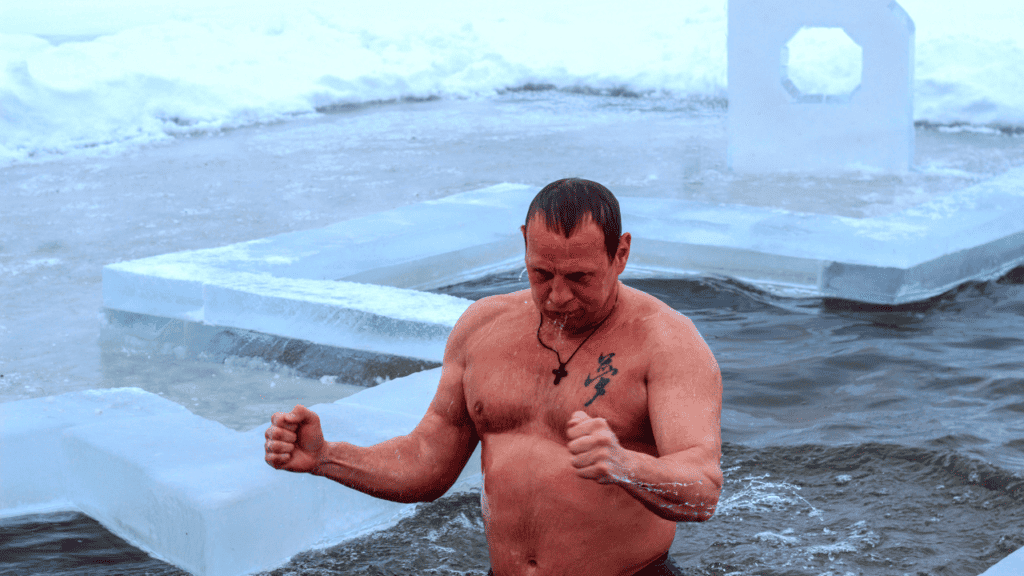
When it comes to immersing yourself in icy waters, taking a gradual approach is key. Your body needs time to adjust and adapt to the extreme temperatures. Start by exposing yourself to colder environments for short periods and gradually increase the duration over time.
This could involve taking brisk walks outside during winter or enjoying cool showers before eventually moving on to cold plunge sessions. By slowly introducing your body to the cold, you allow it to build tolerance and reduce the initial shock.
Adjusting to colder water over time
In addition to acclimatizing your body, you also need to adapt to colder water temperatures. Begin with water that is slightly cooler than your comfort zone and gradually decrease the temperature as you progress.
Remember that everyone has different thresholds, so find what works best for you. Over time, your body will become more resilient and better equipped for longer exposure in even colder waters.
Tips for managing initial shock
The first plunge into freezing water can be quite a shock to both mind and body. To make this experience more manageable, try these tips:
– Take slow, deep breaths before entering the water: Deep breathing helps calm your nervous system, preparing you for the shock.
– Focus on positive affirmations: Remind yourself of the benefits of cold plunge therapy and visualize how invigorating and refreshing it will feel. – Gradually immerse each limb: Instead of plunging all at once, start by dipping one foot or hand at a time until you feel comfortable enough to submerge completely.
– Keep moving: Once in the water, gently move around or do light exercises like stretching or yoga poses. This helps generate heat within your body while distracting from any discomfort caused by the cold.
Breathing exercises to enhance the experience
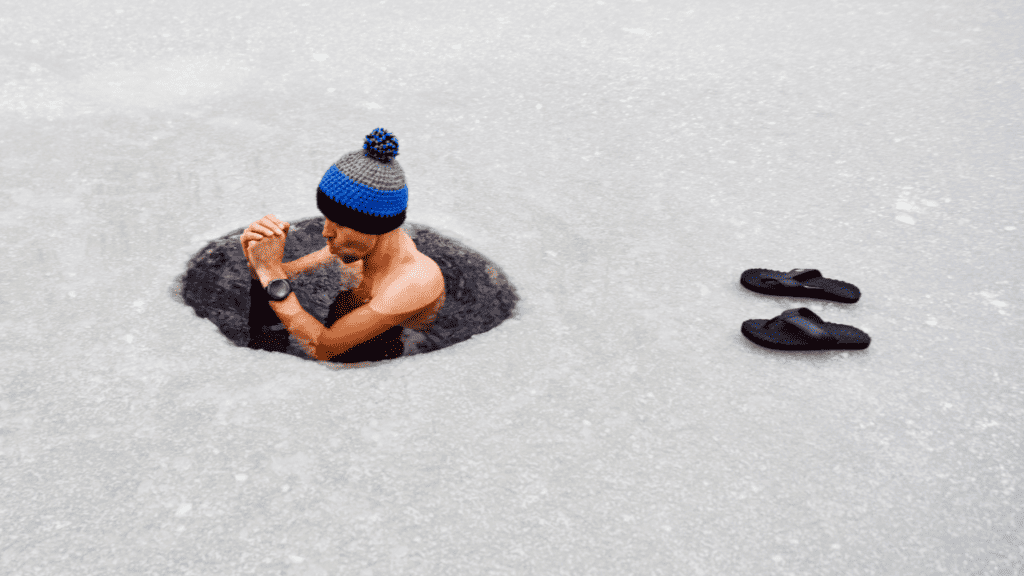
Breathwork techniques can greatly enhance your cold plunge therapy experience. The Wim Hof Method, named after the “Iceman” who holds multiple cold exposure records, involves a specific breathing pattern that helps improve oxygenation and reduce stress. This method consists of deep inhalations followed by forceful exhalations, then holding the breath for a short period before repeating the cycle.
Other breathwork techniques include alternate nostril breathing and box breathing, which involve structured patterns of inhaling, exhaling, and holding the breath. These practices not only allow you to better regulate your body’s response to the cold but also promote mental focus and relaxation.
The role of controlled breathing in reducing stress
Controlled breathing during cold plunge sessions has been shown to reduce stress levels and increase resilience. When faced with extreme temperatures, our natural instinct is often to take quick and shallow breaths, which only heightens anxiety and tension. By consciously controlling your breath and taking slow deep inhales followed by long exhales, you activate the parasympathetic nervous system – responsible for relaxation responses.
This helps calm your body’s fight-or-flight response while inducing a sense of tranquility and peace amidst the icy waters. Harnessing the power of controlled breathing in conjunction with cold immersion can transform your experience into a meditative practice that promotes overall well-being.
By implementing these techniques during your cold plunge therapy sessions, you can maximize the benefits while minimizing discomfort. Remember that practice makes perfect; as you gradually become more accustomed to this invigorating practice, you’ll find yourself embracing colder waters with confidence and enjoying an enhanced sense of vitality both mentally and physically.
Cold Plunge Therapy Variations from Around the World
Russian Banya: The traditional Russian sauna experience
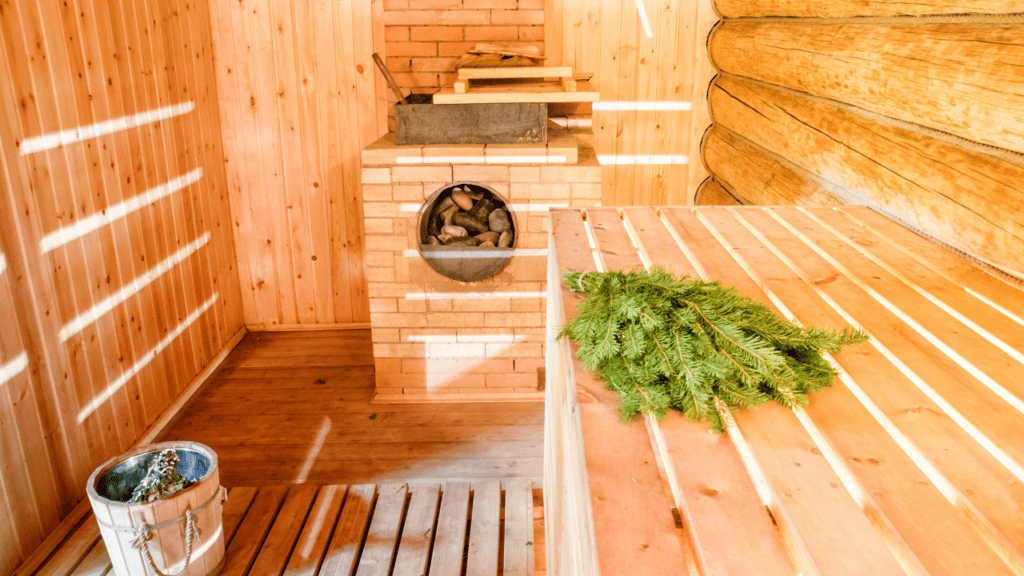
When it comes to cold plunge therapy, one cannot overlook the invigorating and unique experience of the Russian Banya. Unlike regular saunas, a banya involves more than just steam and heat.
It is a centuries-old tradition deeply embedded in Russian culture. In a traditional banya, you have the opportunity to undergo extreme temperature fluctuations by alternating between intense heat and icy cold plunges.
Differences between banya and regular saunas
While both banyas and regular saunas provide relaxation and health benefits, there are distinct differences between the two experiences. In a typical sauna, dry heat is generated by hot rocks or an electric heater, while a banya produces steam through water poured onto heated rocks.
This creates a humid environment that helps open up your pores for deep cleansing. In addition to the steam, another hallmark of the Russian banya is venik massage.
Birch branches known as “veniks” are soaked in water and then used to gently whip the body. This practice not only improves blood circulation but also exfoliates your skin, leaving you with a rejuvenated feeling like no other.
Japanese Shinto Rituals: Purification through cold water immersion

The Japanese have long embraced purification rituals as part of their cultural heritage. One such ritual involving cold water immersion is called “Misogi.” This spiritual cleansing practice aims to purify not just the body but also the mind and soul.
During Misogi, individuals immerse themselves in natural bodies of cold water such as rivers or waterfalls. The shock of icy water against their skin symbolizes shedding impurities accumulated within oneself physically, mentally, and spiritually.
Resources and References
For those eager to explore cold plunge therapy further, here is a list of resources, books, articles, and scientific studies:
- Scientific Study: “Cold water immersion enhances recovery of submaximal muscle function after resistance exercise.“
- Book: “The Wim Hof Method” by Wim Hof
- Article: “What to Know About Cold Water Therapy”
Final Thoughts
Cold plunge therapy offers a wealth of benefits for both your physical and mental well-being. Whether you’re looking to reduce stress, improve circulation, recover from intense workouts, or enhance your overall quality of life, cold plunge therapy can be a valuable addition to your wellness routine.
So embrace the adventure, harness the power of cold plunge therapy, and let it guide you toward an extraordinary sense of vitality!
The authors and editors that comprise the Recovatech Team have 20+ years of combined experience and knowledge covering the topics of strength, fitness, and recovery. We are impassioned in our pursuit of presenting the most up-to-date information on strength training, cardio fitness, physical rehab, functional movement, nutrition, workout recovery, and best-in-class reviews. Should you feel inclined, please reach out to us at admin[at]recovatech.com.

